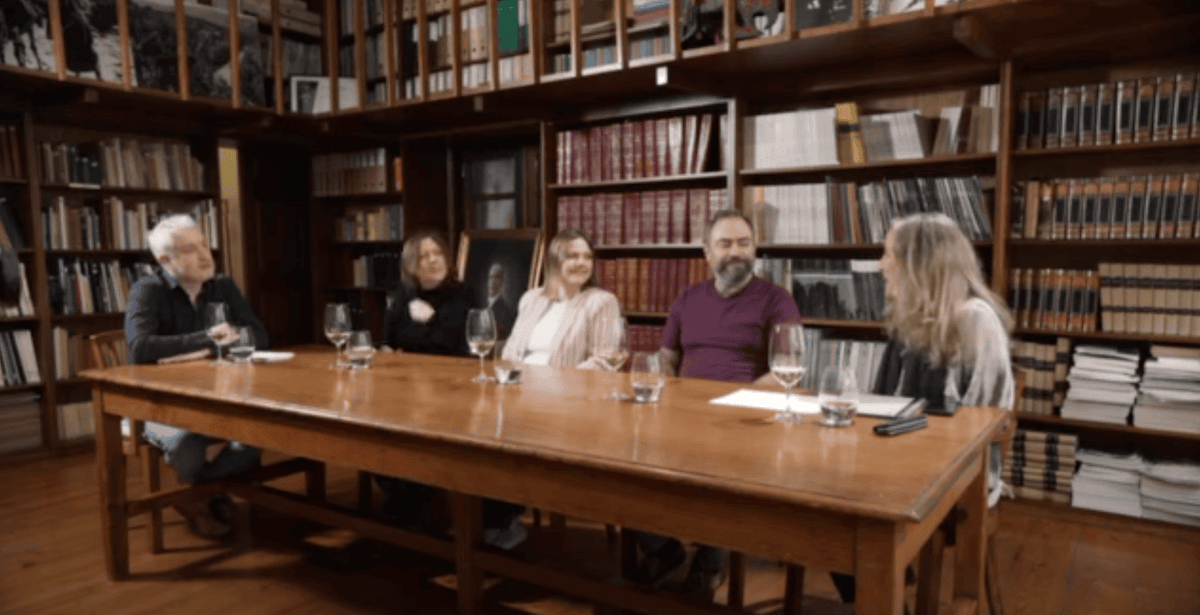I met Emanuele Reolon at Isole e Olena on a bright, sunny Saturday morning in the first week of October as the last of the Sangiovese was being picked. This iconic Chianti producer was bought three years ago by French drinks group EPI and has started implementing a number of major changes without, obviously, affecting too much the style and reputation of the wines – some of Italy’s finest.
Despite having only worked at nearby Casale dello Sparviero for one and a half years, Reolon explains how EPI’s approach was an offer he couldn’t refuse.
Recalling the moment he smiles and says “If Barcelona calls, you can’t say no.”
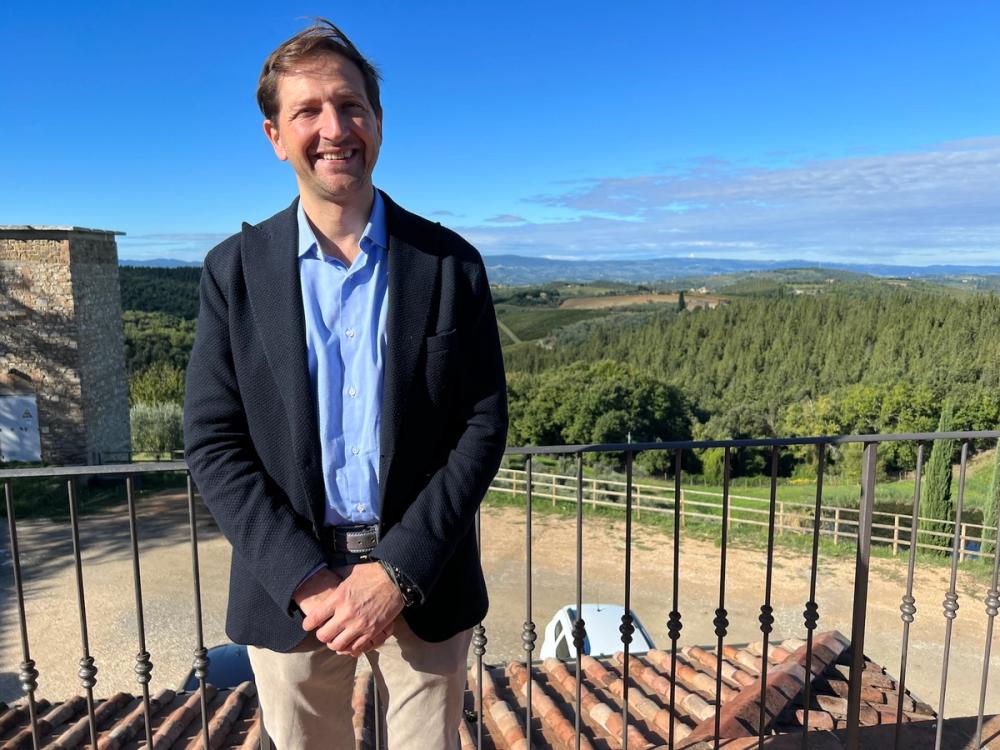
“We are not changing because we want to change – the grapes ask us to adapt to the new situation." Emanuele Reolon, estate director Isole e Olena, October 2024
There’s no denying that Paolo De Marchi was a gifted genius as a winemaker, so does Reolon see himself able to be the ‘new Messi’?
“I am not Messi, I know I am not Messi, but I know the responsibility of wearing the no.10 shirt,” he replies, “ I also know it is not about one person, it is about the team and we have such strong players and such a strong team here at Isole e Olena.”
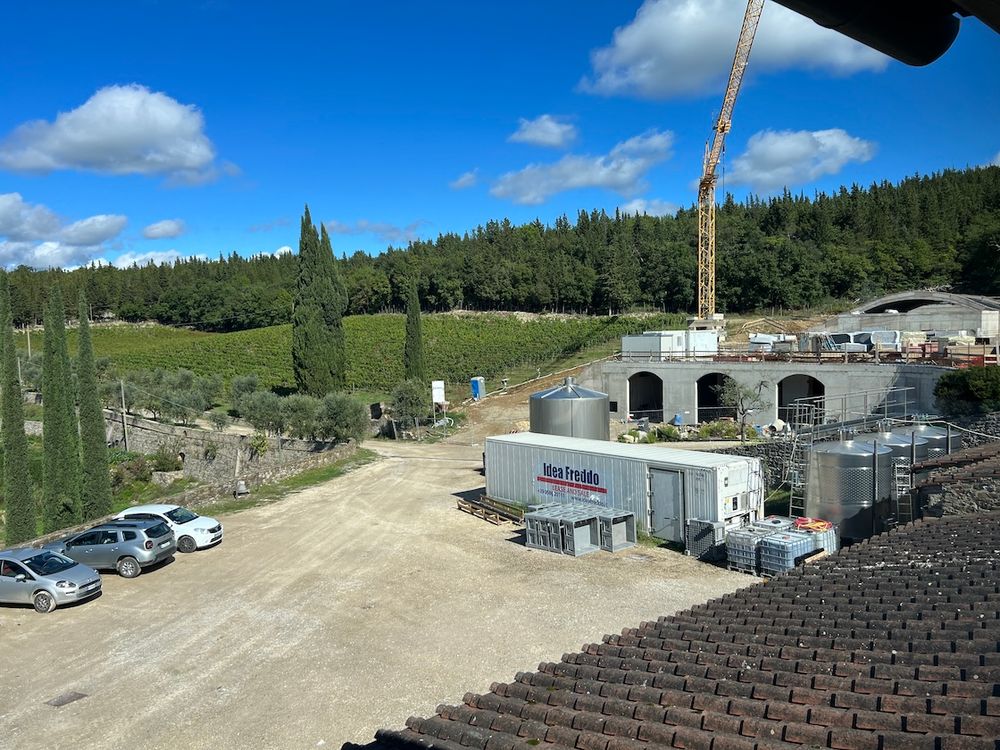
Construction underway - the new winery being built at Isole e Olena
Changes afoot
When Reolon was appointed estate director in 2023 it was with the understanding that key changes could be made. EPI has financial clout with the group also owning Biondi-Santi in Montalcino and Charles Heidsieck and Piper Heidsieck in Champagne.
Key to this new chapter in the history of Isole e Olena is the building of a new two-level winery which will allow the team to vinify each of the 80 parcels separately. The plan is for the current winery to then be used for storing only.
“At the end of harvest we have 80 different parcels but we are only able to vinify 45-60 currently,” Reolon says, “our dream is for full parcelisation.”
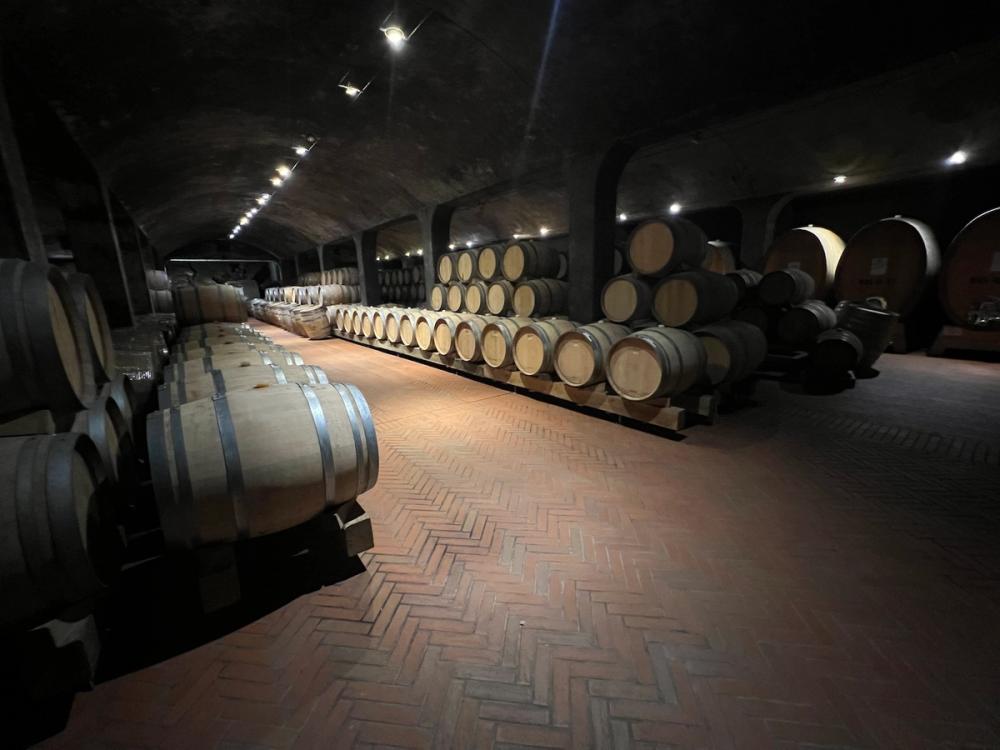
The current barrel room at Isole e Olena
When Paolo De Marchi introduced the estate’s standard bearer Cepparello in 1980 it was after years of slavishly breaking each of the estate’s 56 hectares of vines into small parcels where the grapes were of a noticeably higher quality – he did this famously by tying ribbons around the posts to demark the rows where the Sangiovese was better. Each parcel was then vinified separately.
“With parcelisation you can perfectly understand the personality of each vineyard,” Reolon continues, “my job then is to blend the different characters of every single vineyard, which is crucial to increase the level, to increase the quality of the wines.”
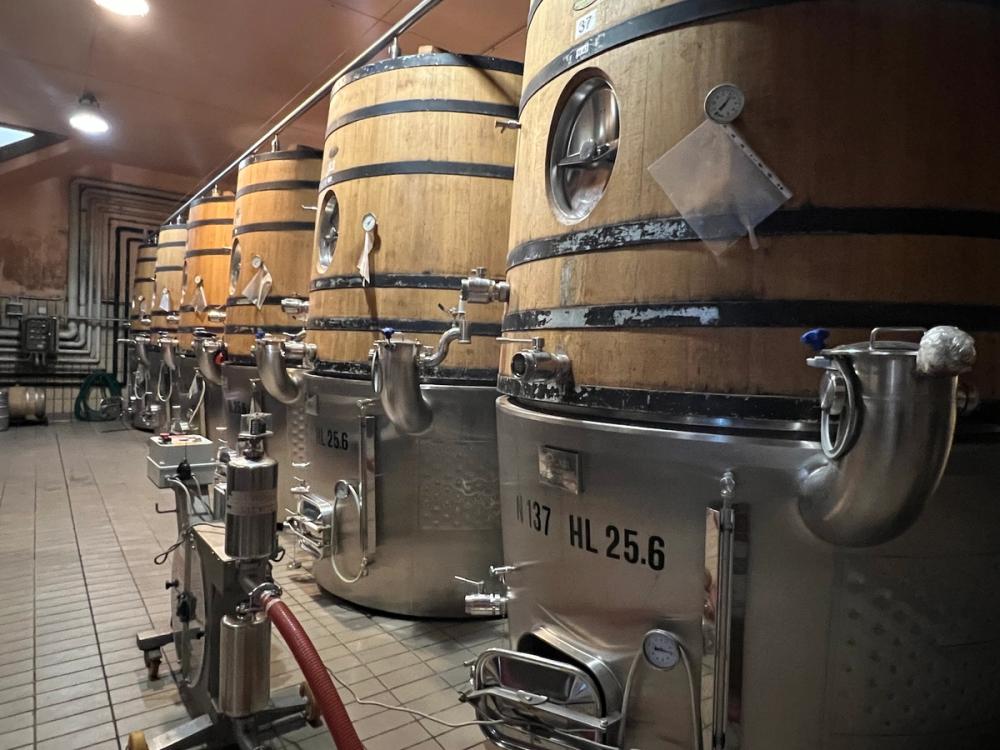
The unique half wood/ half steel fermentation tanks introduced in 1980 for Cepparello
Another key change being introduced is the size of the barrels for Cepparello which is directly linked to the effects of climate change.
“We’re adapting everything to the new conditions, after all the vineyards are the same it is the grapes that are different – there is more sugar, more extraction, more concentration, more alcohol – so we have to adapt ourselves.”
The estate’s Chianti Classico, Cabernet and Syrah are all fermented in steel, while the Cepparello is handled completely differently. The fruit for this iconic 100% Sangiovese has 7-15 days more hang time. The fruit is then vinified in bespoke 43-hectolitre vats (that I personally have never seen before in a winery) the top part of which are made of French oak, the bottom half steel. The fruit is fed into the top (the wooden part) and then over a 2-3-week period the juice runs by gravity into the bottom (steel) tank with soft pump overs and no punch down.
The wine is then aged in small barrels, although this is the part of the process that Reolon is changing.
“We have to change this because there is faster evolution and more alcohol,” he says, “For us to maintain 18 months in barrel for Cepparello we have to adapt the barrel size – the larger format slowing the evolution of the wine. In 2021 they experimented with 27.7-hectolitre barrels and this year we are using three 12 hectolitre barrels as a test.”
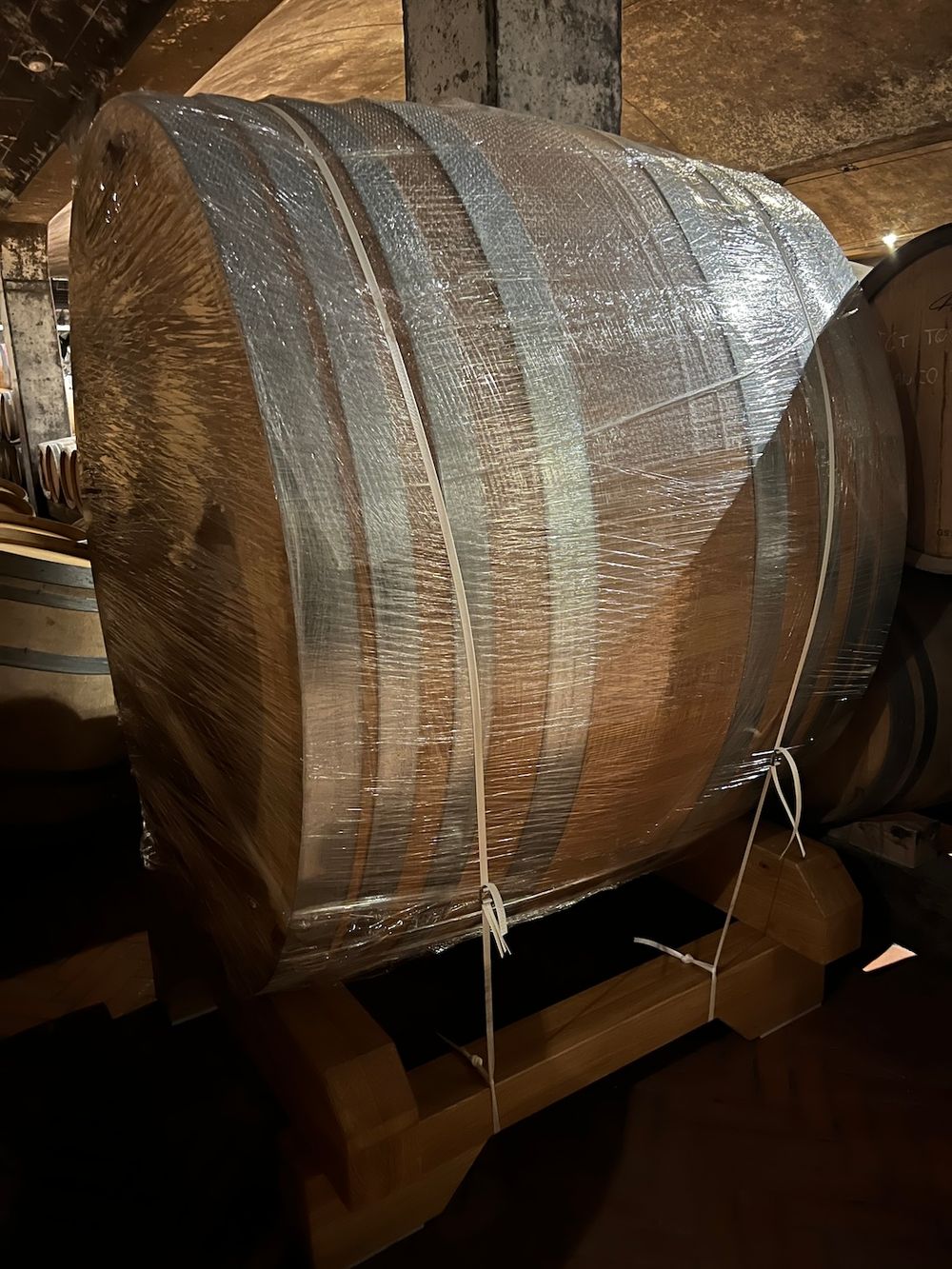
One of the three new experimental large formats being introduced for Cepparello 2024
There are many more changes afoot at the estate, not least of which being the changing of the name of the Chardonnay – it is no longer called Collezione Privata –and a redesign of all of the wines’ labels.
Reolon explains that these changes are evolutionary and would probably have happened if Paolo De Marchi had passed the estate on down through the family. This he couldn’t do because his so Luca was committed to running the family’s original estate Proprietà Sperino in Lessona.
“We are not changing because we want to change – the grapes ask us to adapt to the new situation – so 2021 is the first vintage of the new era (we can’t make all the changes in one year) the first vintage using the big barrel.”
“Nobody could have carried on doing the same things – even the son of Paolo if he had taken leadership would have changed something. But it’s not a problem in my opinion – being here and taking care of Isole e Olena – we can’t ‘freeze it’ in the same way, we have to go on and we know where we come from and know where we want to go which is the best way to approach this job.”
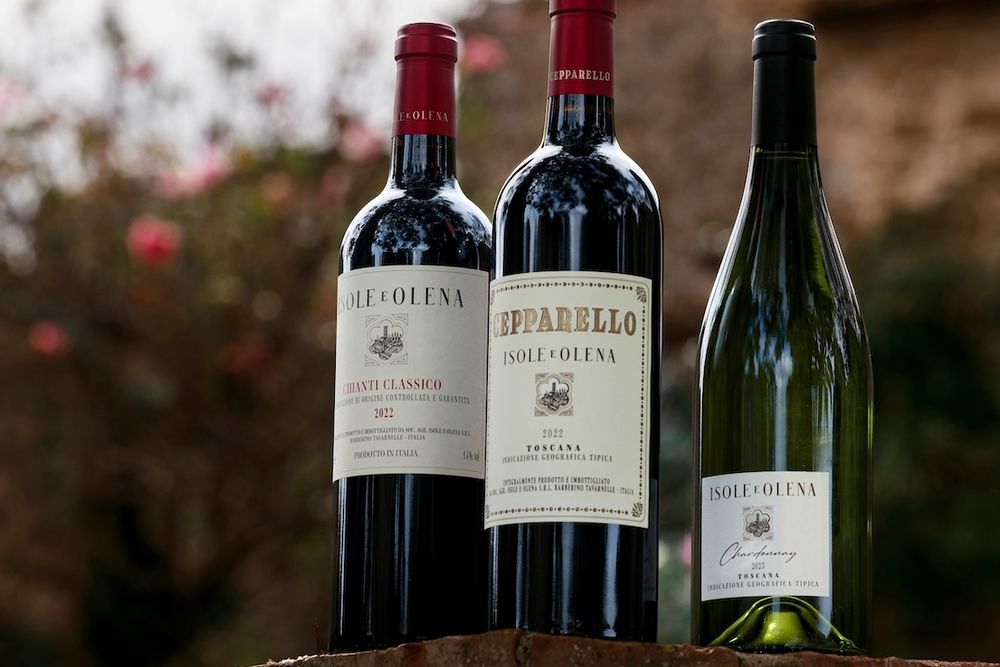
New era and a new look for Isole e Olena's three key wines (reviewed at the end of this article)
Before Paolo left he did a six-month handover with Reolon working alongside him.
“He left me holding the baby but it’s a very nice baby, I am not afraid, I know I have to take care of Isole e Olena and to do that I have to be respectful. I have to be very respectful of the grapes in every vintage. But Paolo himself was always evolutionary, he made a revolution here by being the first estate to go against the Chianti Classico recipe and take out Trebbiano, the first to make a 100% Syrah in Italy (in 1986) and so on… he was a real pirate.”
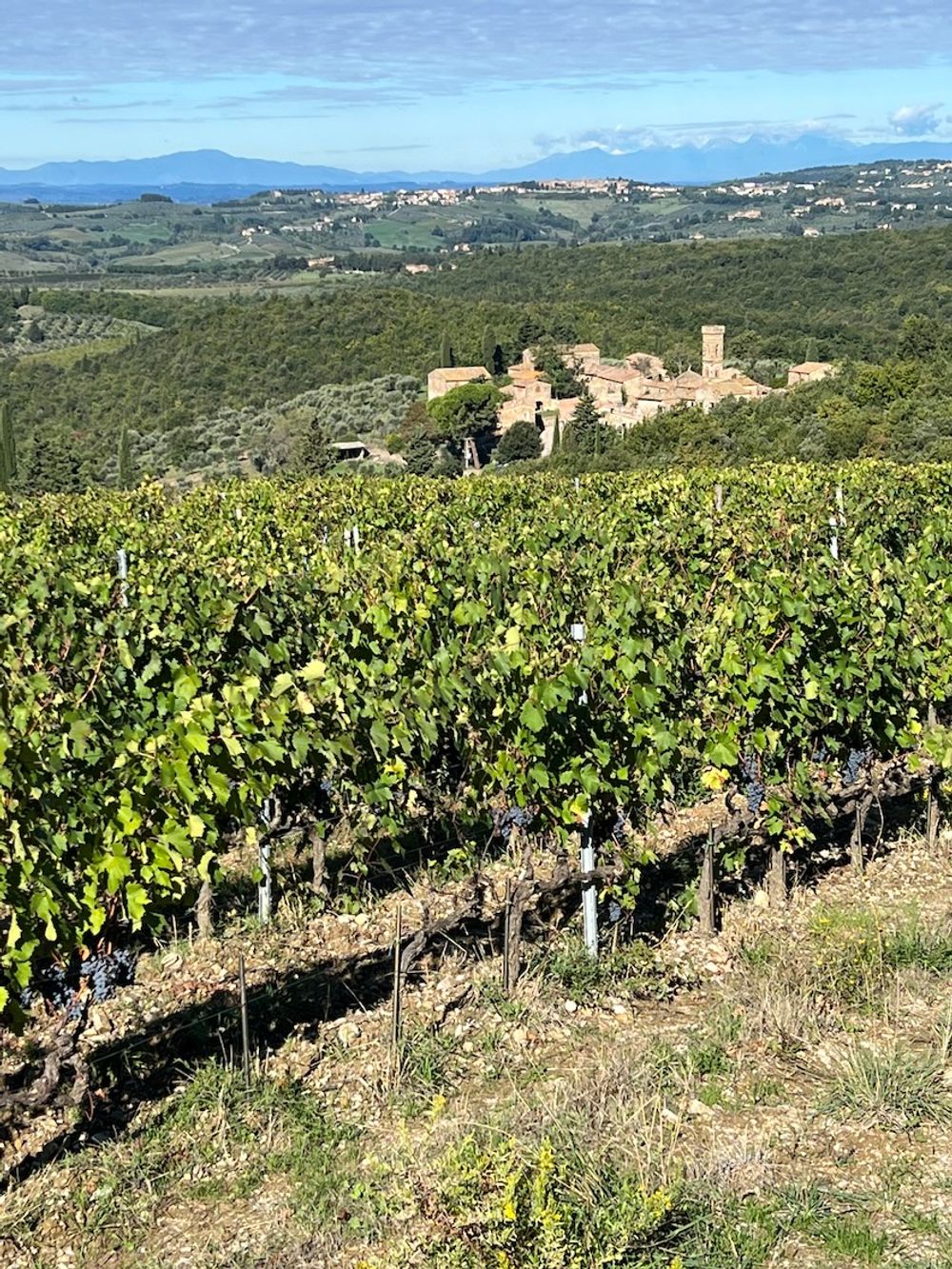
The hamlet of Olena with 30 year-old Sangiovese vines in the foreground
Birth of the estate
Meeting Reolon at Isole e Olena, on a sunny but surprisingly chilly day, was a perfect way of understanding what makes these wines so special.
The estate is situated in San Donato in Poggio on the West side of Chianti Classico, 80km from the sea and 300-500 metres high which allows the wind to maintain a cool climate even in mid-August when it is not too hot here. Despite the warm sun this morning, the wind has a real nip to it.
Isole and Olena are two tiny hamlets a few kilometres apart which, before the end of the share-cropping system, housed 40 and 80 labourers respectively, their populations dwindled now to just 13 and six. Paolo’s father united the two hamlets when he bought the property in 1956. There are 56 hectares of vineyard surrounded by 250 hectares of forest – 6 hectares of Chardonnay planted low down in the coolest part of the vineyard, 5 hectares of Canaiolo, 2 hectares of Cabernet Sauvignon, another 2 of Syrah, 1 hectare of Trebiano (for Vin Santo) and the rest Sangiovese.
“We’re not a winery we’re a vineyard,” Reolon declares as he starts to drive me in his 4x4 around the property, “the most important thing is the vineyard and the environment – you can’t have outstanding wine without an outstanding vineyard.”
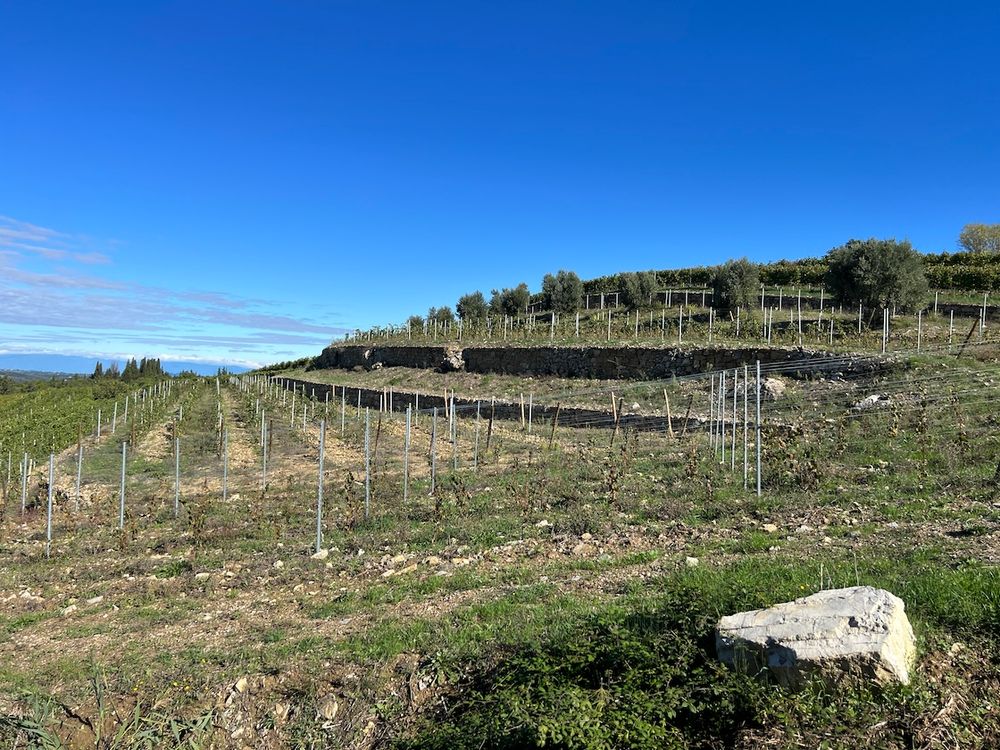
Vineyard terraces are the traditional way of growing grapes in Chianti Classico
And outstanding it is. When he took over the helm from his father, in 1976, Paolo De Marchi started rebuilding stone terraces and dry stone walls which was the traditional way of growing fruit for Chianti Classico and had been abandoned on this estate – 90% of the vineyards here are now split across the terraces.
He also started analysing the various soil types, creating one of the first soil maps in the Chianti Classico region so as to better understand the link between soil and grape clone. Paolo undertook the process of identifying the best performing vines and subsequently planted a new vineyard with grafts from each of the best plants.
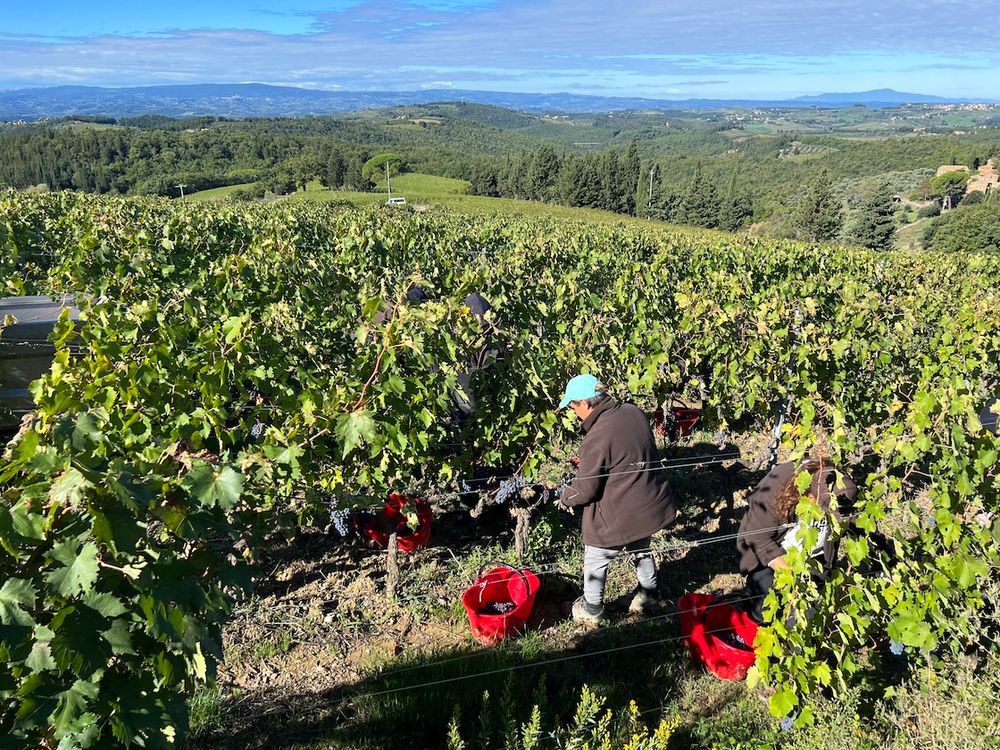
2024 will see 20% less Cepparello: 40-45,000 bottles down from 55,000 bottles
In his second vintage Paolo also took out most of the Trebbiano and Malvasia from the Chianti Classico blend which was required by the appellation, a relic from the sharecropping days when the wines were made for lighter, earlier drinking for field-workers. As for the 100% Sangiovese which he named Cepparello in 1980, it had to be released as a Vino de Tavola as 100% Sangiovese was also not allowed.
Today Reolon explains that, even though Isole e Olena practices organic farming they are not opting for certification to allow them greater flexibility throughout the growing season, important with more extreme weather events happening each year.
“If you were organic in 2023 you would have got nothing. At the end of the day we are an agri-business and we need to make money so we need to produce something. Also we don’t like to put a label on things.”
Tasting notes of the new vintage release
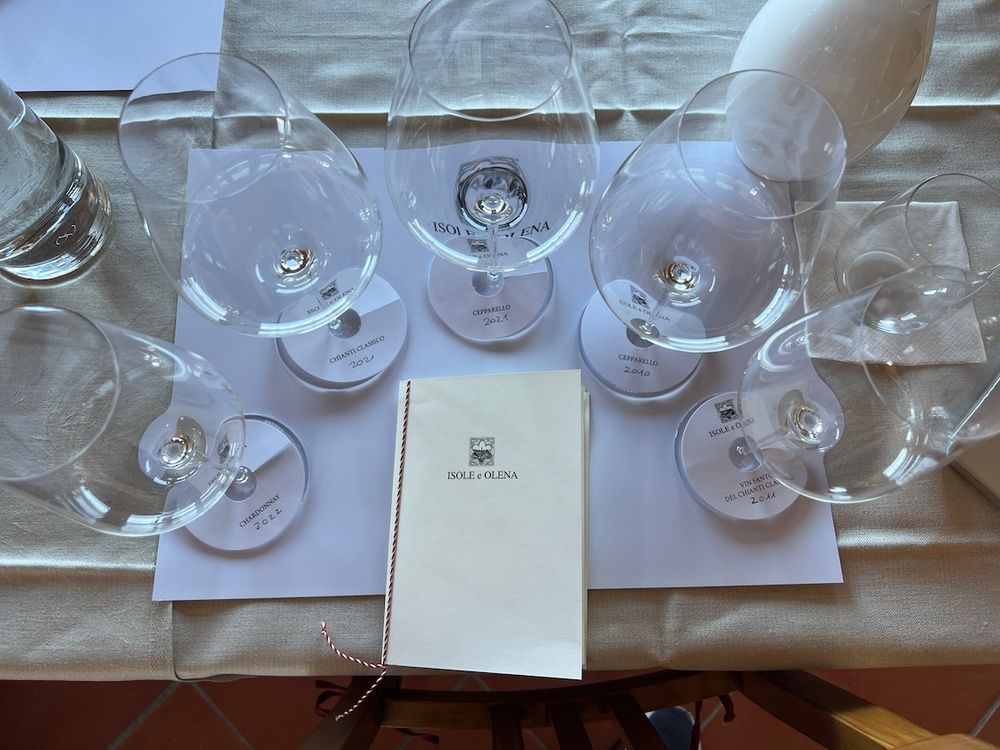
Chardonnay 2023, 14.5% abv
The idea behind this gorgeous, intense expression of Chardonnay is to balance elegance and juiciness of fruit with the minerality of the soil. The wine is fermented in oak and aged in a third of new wood/ 2nd and 3rd fill. It ages on its lees for 10 months. The impressive thing with this wine is how the wood goes around the wine and does not get in the way.
The 2022 we tasted at the estate was surprisingly elegant given how hot and dry the year was, the new 2023 vintage is along the same lines – with a bit more breadth in the palate.
Light platinum gold, the nose is intense, complex almost intoxicating. You find sweet, ripe orchard fruit (pear), toasted almonds, acacia honey, lemon custard, noble wood; the palate is ripe, medium to full bodied, oleaginous in texture, concentrated with real heft – tropical fruits to the fore (pineapple), a buttery note with toasted oak.
Although full bodied it has balance with firm acidity, a touch of tannin and a tart finish keeping the alcohol and ripe fruit in harmony. I absolutely love this wine and it rightfully sits amongst the pantheon of great Italian whites.
Chianti Classico DOCG 2022, 14.5% abv
Paolo De Marchi used to experiment a lot with this wine, especially in his first dozen vintages using Merlot, Cabernet Sauvignon and Petit Verdot in the blend and reducing the percentage of white grapes. These days, however, the wine is normally 85% Sangiovese and 15% Caniolo, the latteradding a spicy, rounded, ‘carefree’ quality to the blend.
The wine is aged in three different types of old oak – Burgundian, German and Austrian.
This hot, dry vintage has produced a stunning Chianti Classico which begins with aromas that will simply make you go “Wow!”. It is full-on, fruity, concentrated and so, so inviting. Blackberry, spices… what’s not to like?
On the palate the wine is warm and open, juicy with sour cherry and bramble notes. There’s a lovely vein of minerality, taut acidity and tannin which all help to balance the ripeness of the fruit. Nice dry finish.
Fresh, open, clean, juicy – lively with well integrated oak – this is so easy to drink and takes you a real journey.
Cepparello 2022 IGT Toscana, 15% abv
Reolon described the 2021 as one of best Cepparello ever made – coming from a cold vintage and a long maturation. Here the hot, dry season of 2022 has produced a different beast but still a remarkable wine of great power and beauty.
The wine is dark and broody, with black fruit, a ferrous quality and liquorice all dominant characteristics. The palate is open, fresh, and then the structure and intensity assert themselves; it’s tense, structured with a rasp of powdery talc tannins, firm acidity – a powerhouse of a wine with brilliant concentration and a lovely register on the palate. There’s an elegance here and great, great balance.
It’s clearly way too young but it’s not unapproachable – you could drink this with wild boar ragu or a roasted tomato dish, for example, but it’s made for the long haul and is beautifully equipped for that journey.
The wines of Isole e Olena are imported and sold in the UK through by Liberty Wines
































